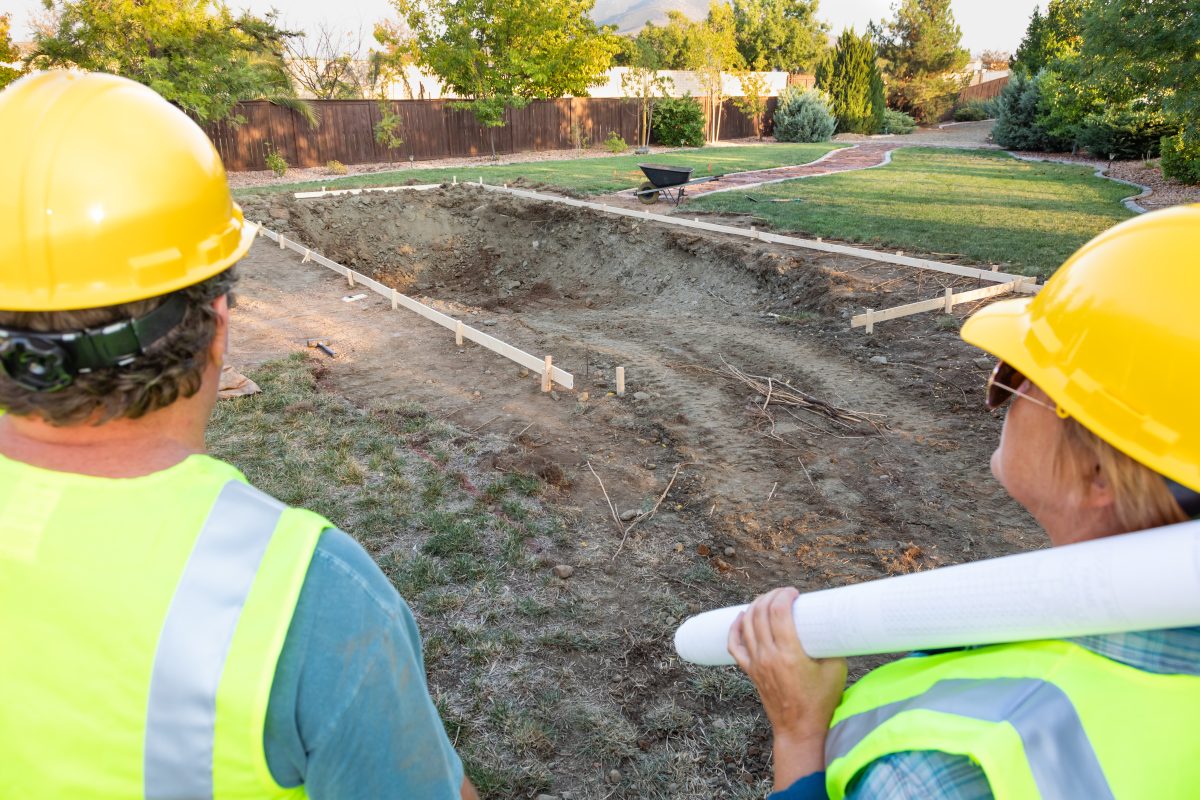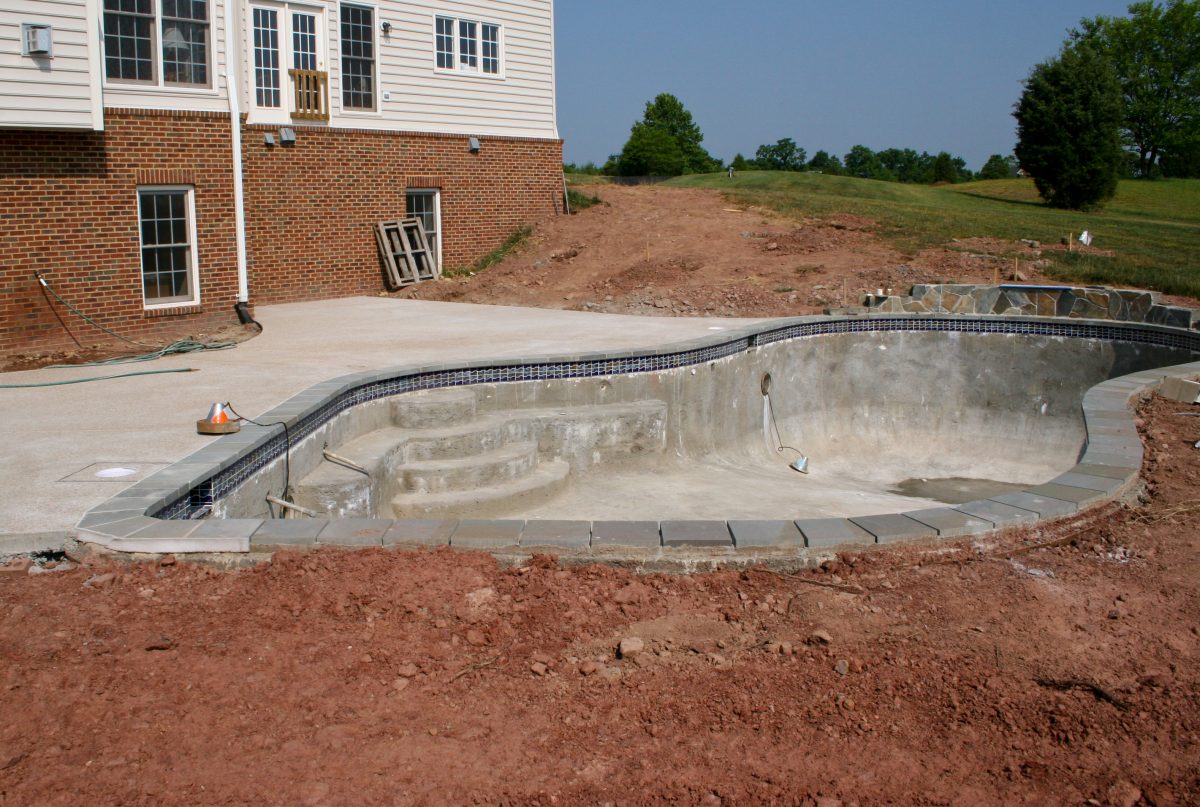
Having spent a significant portion of my career navigating the intricacies of construction regulations, I’m acutely aware that building a pool in Ontario isn’t as simple as digging a hole and filling it with water. There’s an array of complex rules and regulations to consider – rules designed to ensure safety, promote responsible water use, and protect the environment.
If you’re planning on installing a pool in your backyard this summer, it’s crucial that you understand these guidelines before breaking ground. Failure to comply can lead to fines or even forced removal of your newly installed pool! So let me take some time here to shed light on what exactly Ontario’s pool regulations entail.
Ontario’s Building Code Act is clear: any structure capable of holding more than 24 inches (600 mm) deep water requires proper fencing around its perimeter for safety purposes. This means if you’ve got dreams about lazy summer days lounging by the backyard oasis, don’t forget about including plans for adequate fencing too.
Understanding Ontario’s Pool Regulations
I’m diving headfirst into the topic of Ontario’s pool regulations. It may not be as exciting as a high dive, but it’s critical if you’re planning on adding a swimming pool to your property. These rules aren’t there just to make life difficult—they exist for everyone’s safety.
Firstly, Ontario’s Building Code is what governs swimming pools in the province. One essential requirement from this code is that all outdoor pools must have a fence or barrier at least 1.2 meters (about 4 feet) high around them.
Here are some key details:
- The gates should be self-closing and equipped with self-latching devices.
- There shouldn’t be any openings, except doors and windows, in walls forming part of an enclosure.
- Doors providing access to the enclosed area must have locks located at least 1.5 meters above ground level.
| Key Features | Details |
|---|---|
| Fence Height | Minimum 1.2 Meters |
| Gates | Self-Closing & Latching |
| Wall Openings | None (Except Doors/Windows) |
It isn’t just about fencing though! There are also stipulations about pool covers—they need to support the weight of an adult walking across them without collapsing.
Now let’s talk water quality because no one wants green goo instead of cool blue waters! Ontario Health Departments provide guidelines for maintaining proper chemical levels in public pools—but these are good practices even for private ones!
For example,
- Maintain pH between 7.2 – 7.8
- Chlorine levels should stay between 0..5 -10 ppm
And finally, don’t forget permits! If you’re installing a new pool or hot tub in your backyard—you’ll likely need building permits from local authorities before construction begins!
So whether it’s backstroke or doggy paddle—let’s make sure we’re swimming safe by understanding and following these rules closely!
Conclusion: Adhering to Pool Regulations in Ontario
When it comes to building and maintaining a pool in Ontario, there’s no doubt that adhering strictly to the pool regulations is paramount. Not only does this ensure safety for all users but it also protects me from potential legal issues down the line.
For starters, I’d make sure my team and I are well-versed with every aspect of these regulations. This includes everything from fencing requirements (minimum height of 1.2 meters or about 4 feet) and gate specifications (self-closing and self-latching), right down to drain cover compliance (anti-entrapment covers). It’s not just about understanding these rules – we’ll need to implement them flawlessly into our project plan.
| Requirement | Description |
|---|---|
| Fencing | Minimum height of 1.2 meters (about 4 feet) |
| Gates | Self-closing & self-latching |
| Water Quality | Maintain proper chemical levels |
Secondly, staying informed about any changes or updates in these rules will be critical. For instance, if there were new stipulations regarding water quality or chemical use introduced by the local health department or governing bodies like The Pool & Hot Tub Council of Canada – I’d ensure we adapt swiftly.
But adherence doesn’t stop at construction alone. As someone who values long-term client relationships highly, my responsibility extends beyond project completion as well:
- Offering guidance on regular maintenance needs
- Educating clients on their role towards upholding safety standards
- Providing ongoing support whenever they face regulatory challenges
In summary: Building a pool isn’t simply about creating an oasis where people can relax and enjoy; it’s equally important that we respect local laws while doing so – keeping everyone safe is always worth the effort!
Troy Channer is a seasoned professional with over a decade of experience in the construction industry, specializing in residential projects and road infrastructure networks. His expertise spans a broad range of skills, including proficiency in Microsoft Excel, Word, and PowerPoint, which he adeptly uses to streamline operations and enhance productivity.
Troy’s commitment to excellent customer service is a cornerstone of his professional philosophy, always prioritizing client satisfaction and fostering strong relationships. His leadership skills are well-recognized, and he has a proven track record of managing teams to deliver high-quality results.
In addition to his construction experience, Troy is also the proud owner of a successful landscape company based in Oakville. This venture allows him to apply his extensive knowledge of civil engineering and project management to create beautiful and sustainable outdoor spaces for his clients.
Troy holds an Advanced Diploma in Civil Engineering Technology from Humber College, further solidifying his credentials as a highly skilled operations professional in the industry. His combined experience and education make him a versatile professional capable of tackling a wide range of projects.









